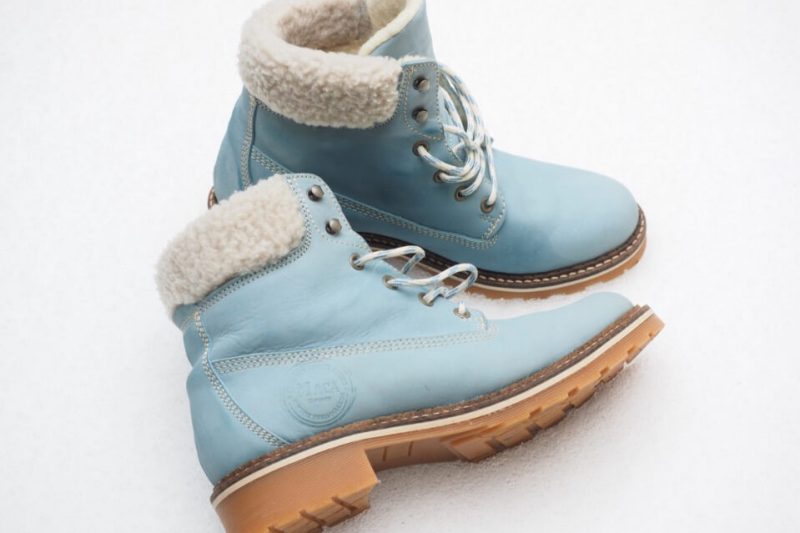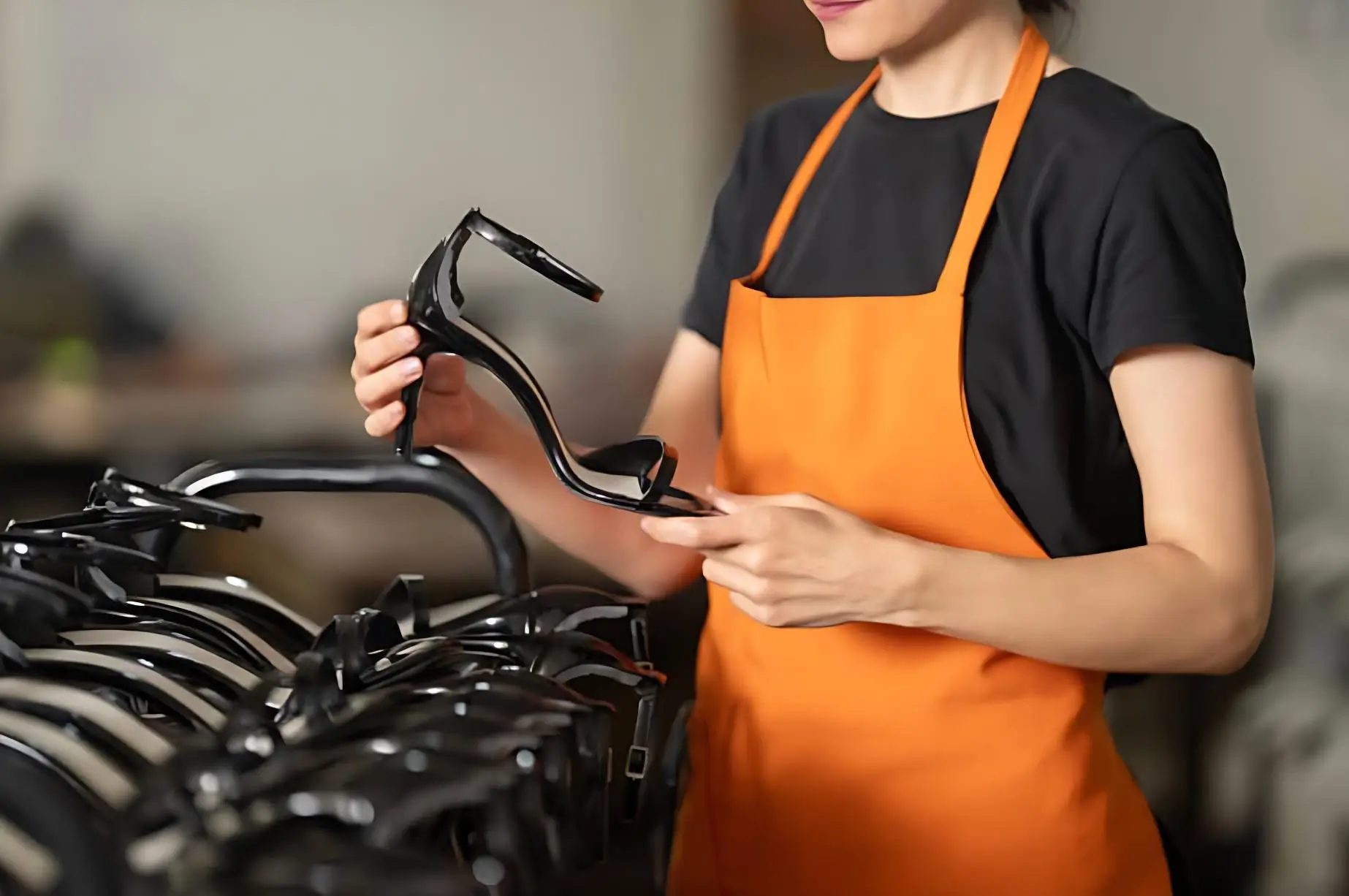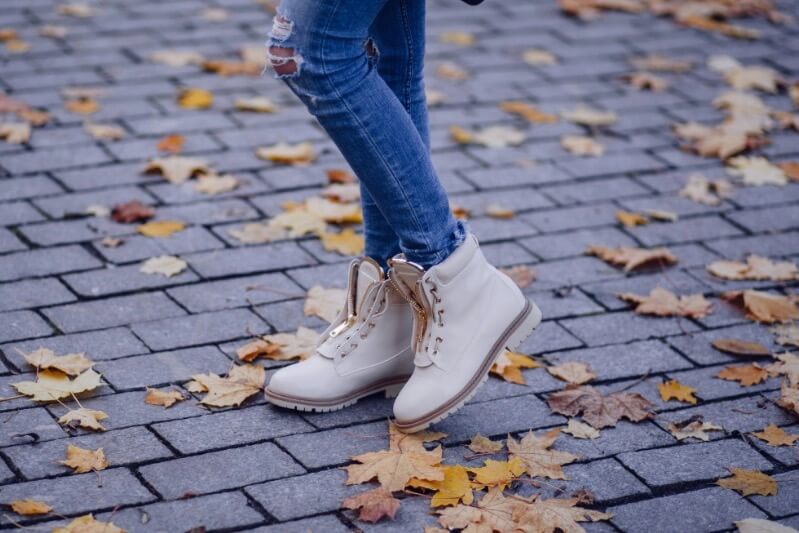As a brand owner or a buyer, I can tell you that pricing is the most critical lever you have for profitability. It’s a delicate balancing act. Price your shoes too high, and your inventory will gather dust. Price them too low, and you’ll be out of business in a season. I’ve spent over a decade in the footwear industry, helping brands navigate this very challenge.
This guide is my no-fluff, step-by-step playbook. It’s designed to take the guesswork out of pricing your private label shoes. We’ll walk you through a simple, 4-step formula that you can use to calculate your costs, set your wholesale price, determine your retail price, and ultimately, build a profitable business. This isn’t just theory; this is the practical, on-the-ground process that successful brands use every single day.
A 4-Step Playbook for Profitable Shoe Pricing
Pricing can feel complex, but from my experience, a successful strategy always comes down to a clear, step-by-step formula. We’ll break down each step in detail, but let’s start with a high-level overview of the journey.
Step 1: Calculate Your True Landed Cost (COGS)
This is the absolute foundation. Before you can even think about profit, you must know, down to the penny, what it costs to get one pair of your shoes from the factory floor to your warehouse door. This is your Landed Cost, or Cost of Goods Sold (COGS). It is not just the price the factory charges you.
The FOB Price: What’s Included?
When you get a quote from a shoe manufacturer in China, they will almost always give you an FOB (Free On Board) price. This typically includes the cost of all materials, labor, factory overhead, and getting the goods to the port of origin.
Beyond FOB: Calculating Your Total Landed Cost
The FOB price is just the beginning. The formula to get your true cost is:
Landed Cost = FOB Price + Shipping + Insurance + Import Duties + Logistics Fees
A Real-World Example: The Landed Cost of a Men’s Leather Boot
Let’s make this real. Imagine you are producing a men’s leather boot to sell in the USA:
FOB Price: $20.00
Shipping: $3.00 per pair
Import Duties (10%): $2.00 per pair
Other Logistics Fees: $1.00 per pair
Your Total Landed Cost = $26.00 per pair. This is your starting number for every calculation that follows.
Step 2: Set Your Wholesale Price (The 50% Margin Rule)
Now that you have your true cost, it’s time to set your wholesale price—the price you’ll charge retailers. The goal is to set a price that gives you a healthy profit margin while also allowing the retailer to make their own profit. The industry standard, and a great target to aim for, is a 50% wholesale profit margin.
How to Calculate Your Wholesale Price
To calculate this, you use a simple formula.
The Formula:
Wholesale Price = Landed Cost / (1 – Desired Wholesale Margin)
Example Calculation:
$26.00 / (1 – 0.50) = $52.00 Wholesale Price
This means you would sell your boot to retail partners for $52.00. This gives you a gross profit of $26.00 on every pair you sell wholesale, which you can then use to cover your operational costs like marketing, salaries, and warehousing.
Step 3: Determine Your Retail Price (The Keystone Markup)
The retail price, or MSRP (Manufacturer’s Suggested Retail Price), is what the end customer will pay. The most common method in the fashion and footwear industry is the Keystone Markup. A standard keystone is a simple doubling of the wholesale price (a 2x markup). However, for footwear, a slightly higher markup of 2.0 to 2.5 times the wholesale price is very common. This extra margin helps retailers cover their high overheads (rent, staff) and potential markdowns. Let’s use a 2.2x markup for our example.
How to Calculate Your Retail Price (MSRP)
The Formula:
Retail Price = Wholesale Price x Keystone Markup
Example Calculation:
$52.00 x 2.2 = 114.4
In this case, you would likely set your final retail price at a clean, consumer-friendly number like $115.00 or $120.00.
Step 4: The Art of Pricing – Beyond the Formula
The formula gives you the numbers. But the final, and most important, step is to make sure your price makes sense in the real world. This is the “art” of pricing, and it’s where your knowledge as a brand owner is crucial.
Competitive Analysis: What Are Your Rivals Charging?
You must analyze your direct competitors. If your calculated retail price of $115 is significantly different from the market average for a similar quality boot, you need to understand why. Are your materials better? Is your brand story stronger? You must be able to justify your price to the customer.
Brand Positioning & Perceived Value: Are You a Premium Brand?
Pricing is a powerful signal. A higher price can communicate luxury, craftsmanship, and superior quality. A lower price can signal value and accessibility. Your price must align with your brand’s story. If you are building a premium private label footwear brand, you might use a higher markup (e.g., 2.5x or even 3.0x) to reinforce that premium positioning.
Psychological Pricing: The Power of $99 vs $100
This is a classic retail tactic for a reason: it works. Pricing a product at $119 instead of $120 can have a real psychological impact on a customer’s willingness to buy. It “feels” significantly cheaper, even though it’s only a dollar difference. Always consider this when setting your final retail price.
Frequently Asked Questions
1. What is the rule of thumb for wholesale pricing?
The most common rule of thumb is to aim for a 50% wholesale profit margin. The easiest way to calculate this is to simply double your landed cost (e.g., a $25 landed cost becomes a $50 wholesale price).
2. What is a good profit margin for private label shoes?
A good gross profit margin for a direct-to-consumer shoe brand is typically between 50% and 65%. This gives you enough room to cover your marketing costs, overheads, and still make a healthy profit.
3. How do I use a wholesale price calculator?
A wholesale price calculator is just a simple tool that uses the formula we discussed above: Wholesale Price = Landed Cost / (1 – Desired Wholesale Margin). The most important part is making sure you have an accurate Landed Cost number to start with. Don’t just guess your shipping and duty costs!
4. What is the difference between markup and margin, and which should I use?
Markup is what you add to your cost (e.g., you add $25 to a $25 cost, which is a 100% markup). Margin is what percentage of the final selling price is profit (e.g., if you sell for $50 and your cost was $25, your profit is $25, which is a 50% profit margin). When you are talking about business strategy, margin is the more important and more professional metric to use.
5. How do I create a wholesale price list for my shoes?
A wholesale price list, often called a linesheet, should be a simple, clean, and professional document. For each style, it should include: a high-quality product photo, the style name or number, the wholesale price, the suggested retail price (MSRP), the available sizes and colors, and your ordering terms (e.g., MOQ, case pack size).
Final Takeaways: Partner with a Factory That Helps You Control Costs
I hope this guide has given you a clear and actionable framework for pricing your shoes. As you can see, profitable pricing starts long before you put a price tag on a shoebox. It starts with a great manufacturing partner.
Here are the most important takeaways to remember:
Know Your True Landed Cost: This is the absolute foundation of everything. You must include every single cost to get your product from the factory to your warehouse.
Aim for a 50% Wholesale Margin: This is the industry standard and a good target for a healthy, sustainable business.
Use a 2.0x to 2.5x Retail Markup: This is the standard keystone markup for footwear. You can and should adjust it based on your brand’s unique positioning.
Do Your Market Research: The formula gives you the numbers, but the market tells you the truth. Make sure your pricing is competitive and aligned with your customers’ expectations.
Find a Partner Who Understands Cost: The key is to find a factory that not only delivers high quality but also works with you as a strategic partner to control your costs and engineer your product to hit your target price point.
At JINHUA, we are experts in cost engineering and supply chain optimization. We work with brands every day, helping them to find the right materials and the most efficient production processes to achieve their desired profit margin. We don’t just give you a price; we work with you to build a profitable shoe line.
Got a project in mind? Let’s turn it into reality.
You can start the conversation by reaching out to our expert team through your preferred channel below.
📧 Email: sales@jinhuashoes.com
(You’ll get personalized, expert feedback within 12 business hours.)



